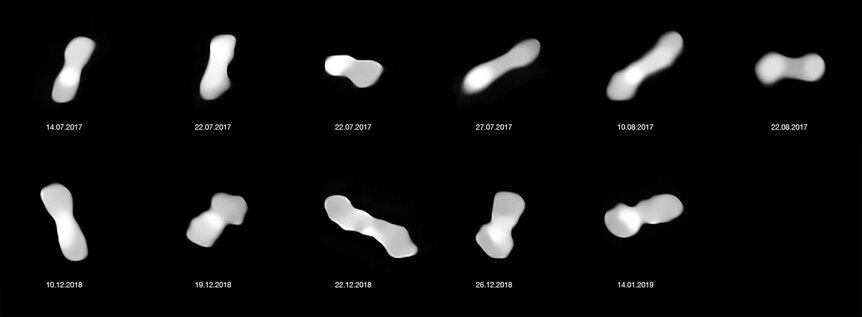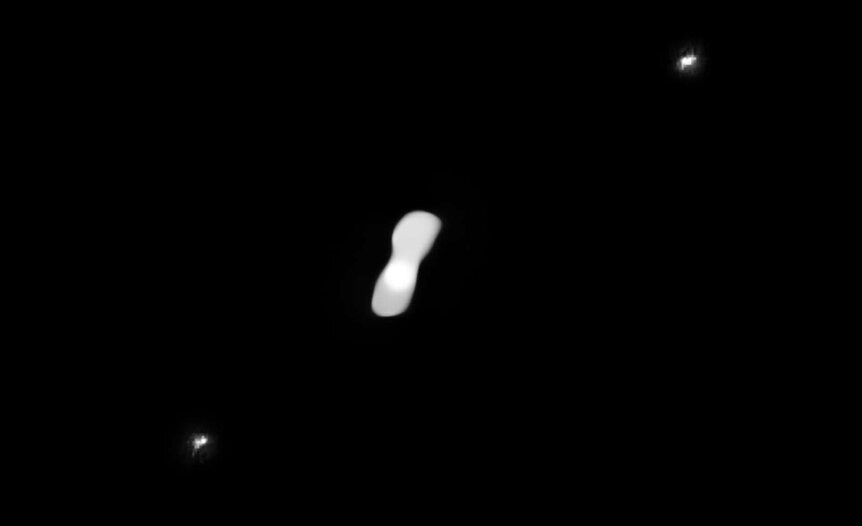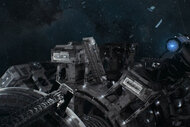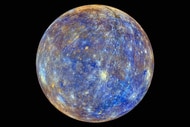Create a free profile to get unlimited access to exclusive videos, sweepstakes, and more!
Kleopatra may be a dumbbell-shaped metallic rubble pile
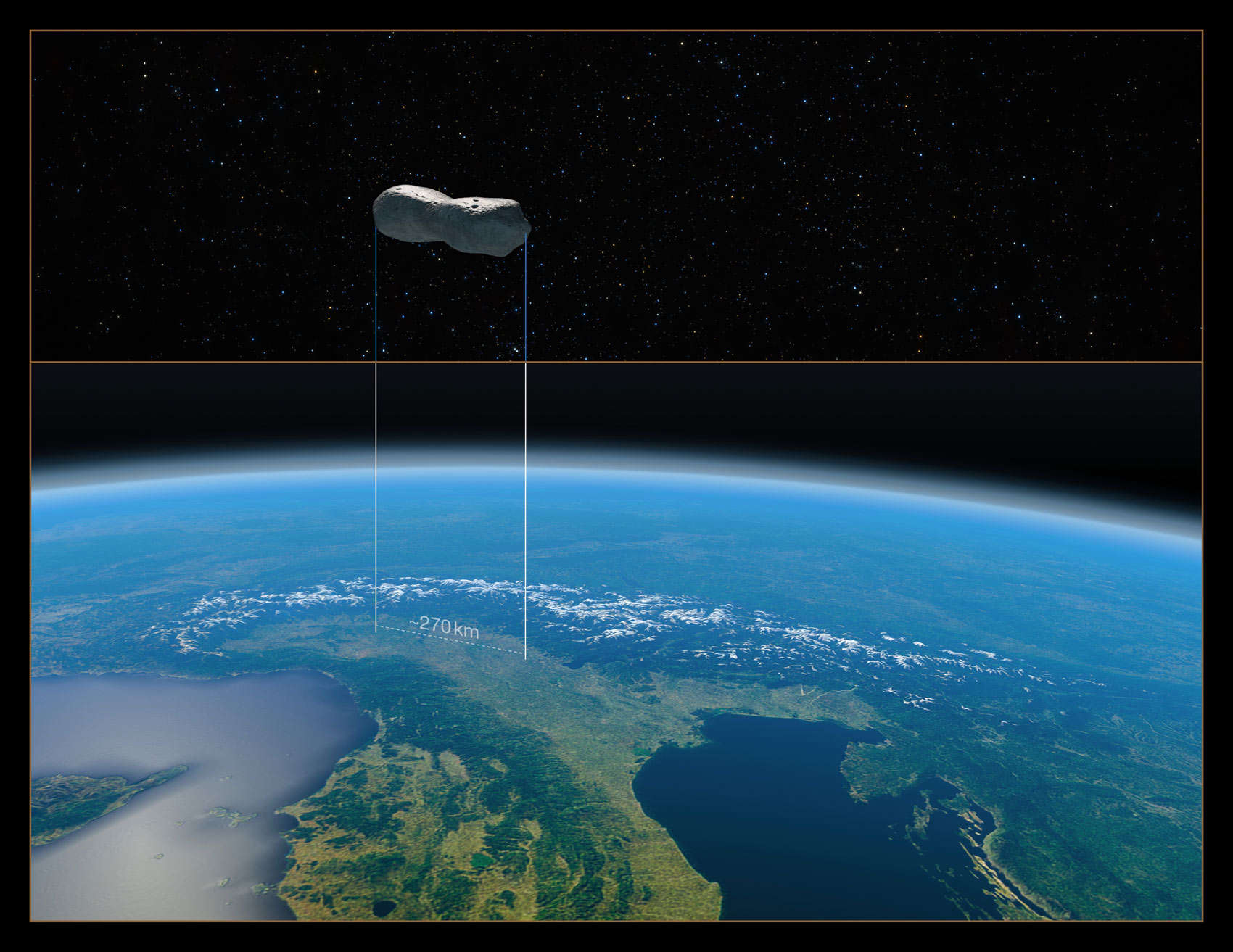
One of my favorite space rocks is 216 Kleopatra.
It’s an asteroid in the main belt between Mars and Jupiter, and it’s one of the biggest ones. The reason I love it is because of its shape: It looks like a cartoon dog bone or a dumbbell, two elongated lobes stuck together via a neck between them.
The exact shape, size, and other physical characteristics have been surprisingly difficult to pin down, but a couple of new papers have just been published by astronomers who used a suite of observational techniques to put together what is likely the most accurate model of Kleopatra yet. Even better, the numbers they get give insight into how the asteroid may have formed.
They got cutting-edge observations with the phenomenal SPHERE/ZIMPOL camera on the huge 8.2-meter Very Large Telescope to image the asteroid as it rotated, so it shows different angles to us over time. Combining this with older observations using the Keck II telescope, radar, and even stellar occultations, they were able to construct a shape model of the asteroid with accurate dimensions.
Overall, the main body of Kleopatra is 270 kilometers in length, which is quite large. The two lobes are similar in size and shaped like slightly flattened potatoes; the bigger one is 118 x 94 x 66 km and the other is 126 x 79 x 61. They’re connected by a neck that’s at a minimum roughly 25 km long. By volume, the bigger lobe is 47% of the total volume, the smaller one about 40, and the other 13% or so is the neck.
That’s nifty, but this gets way better. Critically, the observations also detected Kleopatra’s two small asteroid moons, Alexhelios and Cleoselene. The astronomers were able to determine how long it takes the moons to orbit the main asteroid (1.8 and 2.75 days, respectively), and that depends on how much mass Kleopatra has and how far the moons are from it.
The moons’ distances can be measured off the image. That means they can get the mass of Kleopatra.
Turns out, it’s a beefy 3 quadrillion tons (3 x 1018 kg), if that number is ever needed in conversation. But that mass is much lower than a previous estimate (4.63 quadrillion tons), while the overall dimensions didn’t change much. That means the density is lower than previously thought, and that’s very, very important.
The old density measurement had it around 5 grams per cubic centimeter (or 5 times the density of water), which is pretty dense. Something like that would have to be mostly metal. As it happens, Kleopatra is a really good reflector of radio waves, which is what you’d expect from something metal. That’s fine, but the problem is the shape of the asteroid. How could something made of metal become a dog bone?
The new measurement resolves this. The density the new work comes up with is more like 3.4 grams/cc, much less than before. That strongly implies Kleopatra is a mix of rock and metal, which makes a lot more sense overall. Why?
We’ve seen many double-lobed or highly elongated asteroids and comets. We think they form after a big impact on a mostly spherical body. The body shatters and then the pieces reaccumulate under their own gravity. Depending on the angle and velocity of the collisions, it’s fairly easy to form two separate smaller objects that orbit each other so closely they actually touch. We call these contact binaries.
A pinched hourglass-waist-shaped neck forms naturally between them. Voilá! The dog bone of Kleopatra.
But there’s more. Typically, the object that forms after the collision is something of a rubble pile, literally a bunch of smaller rocks (heavily infused with metals like iron and nickel) held together by their own gravity. This means there are lots of spaces between the rocks. That lowers the overall density of such an object.
That fits what’s seen with Kleopatra, too. If it formed this way you’d expect its density to be much lower than just a mix of rock and metal, and that’s right where the new density measurement falls.
Not only that, but Kleoaptra rotates very rapidly (end over end, like if you grabbed a long stick and threw it), taking only about 5.4 hours to spin once — remember, it’s 270 km long, so that’s pretty fast. If you were standing on the tip of one lobe, the centrifugal force outward very nearly balances gravity inward. If it spun any faster it would fly apart.
We see lots of solid asteroids spinning faster than this “breakup” speed, held together because they’re solid. But a rubble pile cannot spin faster than that because then it starts to fling rocks off its surface. The fact that Kleopatra is so close to but not faster than its breakup rotation rate again implies it’s a rubble pile.
Also, both moons orbit in the same plane as Kleopatra’s spin, which is very interesting. Asteroids can be spun up faster by the force of sunlight. But if it spins too fast it loses matter, which takes away angular momentum, so it slows. That may be what happened here: Sunlight spun up Kleopatra, it started “mass shedding”, flinging material off the main body that coalesced into a moon, and slowed its spin a bit. Sunlight spun it up again and it formed another moon. It may be near that point once again.
I’ll note that no rubble pile asteroid has been seen anywhere near as big as Kleopatra (usually they’re in the few-kilometers-wide range) so if this is all true it will be an important and exciting discovery in our understanding of how asteroids form and behave.
But either way, what a cool rock! You can see, I hope, why it’s one of my favorites. It’s so bizarre! NASA and ESA are both getting ready to launch more missions to asteroids, including Didymos and Psyche. I hope someone can put together a proposal for a mission to Kleopatra and its tiny moons. Oh, how I’d love to see this one up close, to plumb its depths and reveal its mysteries!
And also just to revel in what would be amazing images of this strange, strange object up close.
